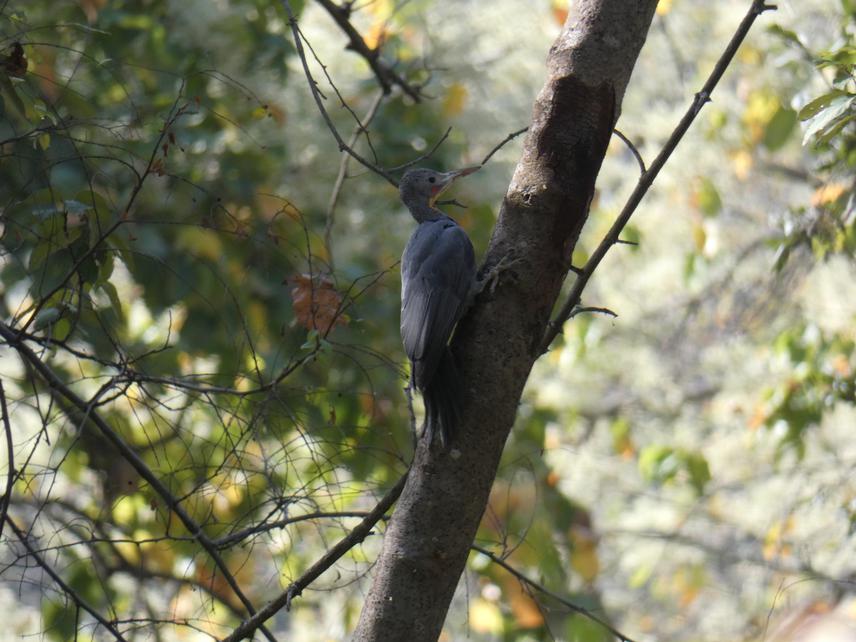Sarabjeet Kaur
Foraging behaviour of an organism depends largely on the suitable habitat it inhabits and substrate availability there which can be used for foraging. The current study focuses on the seasonal changes in foraging methods of adult Great Slaty Woodpecker (GSW) in adapting to habitats with the help of their foraging strategies and substrates. Seasonal changes in the availability of food might be expected to cause changes in foraging strategies. A species may require large areas for foraging and developing knowledge on foraging ecology of that particular specie may benefit us in filling the gap in its conservation and prospects for survival. The current study will possibly indicate the refinement of the adaptive equilibrium between a species and its environment.

Great Slaty Woodpecker (Mulleripicus pulverulentus).
Pawalgarh Conservation Reserve is one of the important areas which support 14 species of woodpeckers out of the total 32 species present in India with majority of the species occurring in the Himalayan Region. Great-Slaty Woodpecker is the largest woodpecker present in India and is a vulnerable species with limited distribution primarily wherever the mature Sal stands occur in the state of Uttarakhand. Since, the species is restricted to certain areas in Uttarakhand, it becomes very important to preserve the habitat and ensure the success and survival of their range and population.
This study will help us to gather baseline information on whether any mismatch occurs between prey (primarily insects) availability and their breeding success caused by the effects of climate change which may render the population of the species to critical. This will help us to identify the specific stage or stages during foraging which account for the reduced foraging proficiency during a typical foraging sequence (i.e., the progression involving foraging site, search patterns, diet choice, prey capture, and prey handling), to determine the factor or factors which constrain foraging proficiency and also in determining how adults compensate for their lack of foraging proficiency (i.e., more time feeding, searching in different habitats, selecting different prey, relying on observational learning, and piracy).
Therefore, baseline information is important which can help in outlining the important areas in and around Pawalgarh Conservation Reserve supporting the Great-Slaty Woodpecker based on which appropriate conservation strategies can be adopted to effectively draw specific guidelines and adopt management strategies for the long-term survival and viability of the Great-slaty Woodpecker population.